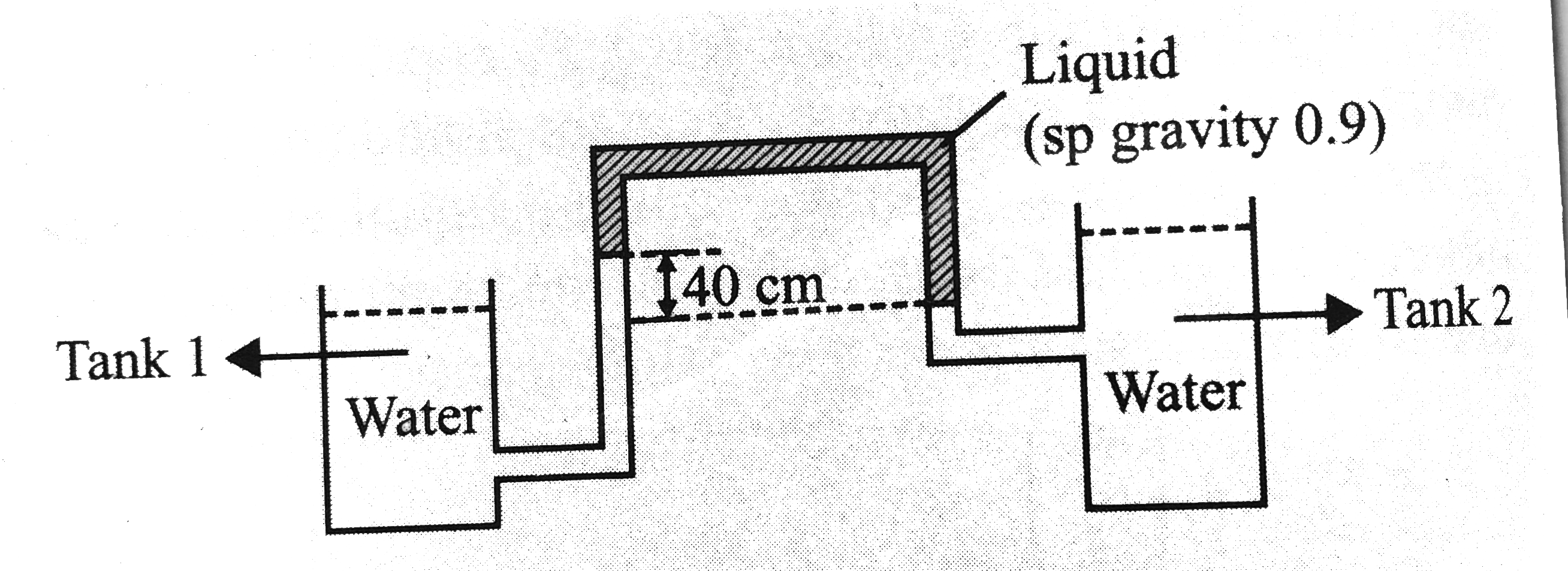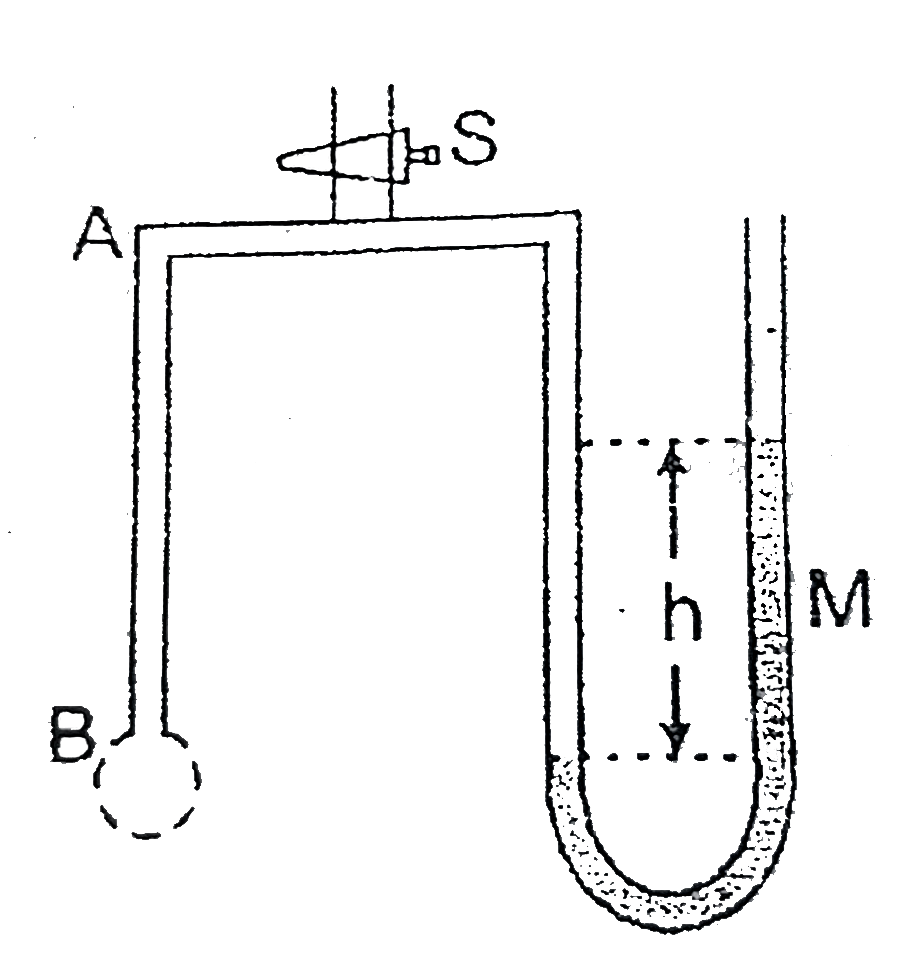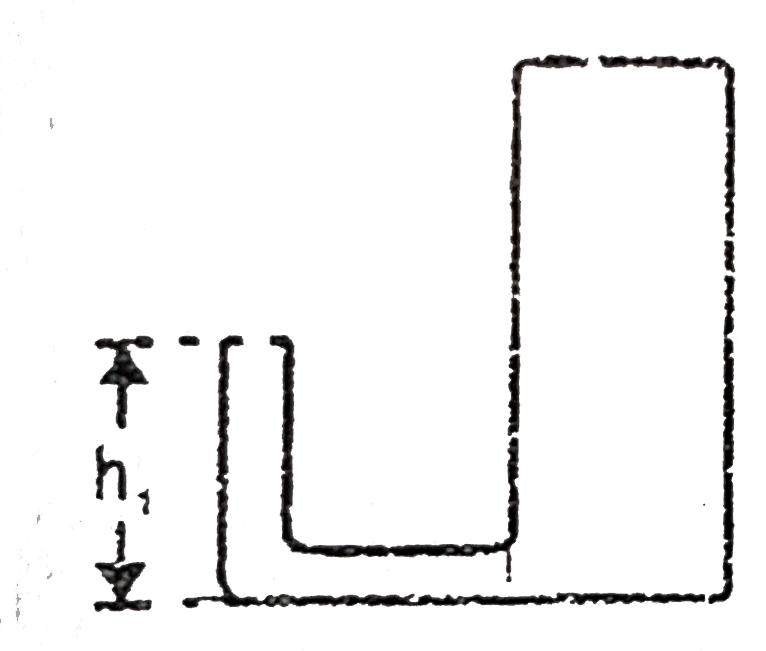An inverted tube manometer shown in figure is used to measure the difference in water level between the two tanks. Calculate this diference for the conditions indicated.


as
Topper's Solved these Questions
- BOOK - RESONANCE ENGLISHCHAPTER - FLUID MECHANICSEXERCISE - Board Level Exercise18videos
FLUID MECHANICS
- BOOK - RESONANCE ENGLISHCHAPTER - FLUID MECHANICSEXERCISE - Exercise- 1 PART - I Section (A)3videos
FLUID MECHANICS
- BOOK - RESONANCE ENGLISHCHAPTER - FLUID MECHANICSEXERCISE - Advanced Level Problems8videos
FLUID MECHANICS
- BOOK - RESONANCE ENGLISHCHAPTER - ELECTROSTATICSEXERCISE - Exercise52videos
ELECTROSTATICS
- BOOK - RESONANCE ENGLISHCHAPTER - FULL TEST 1EXERCISE - Exercise30videos
FULL TEST 1
Similar Questions
Knowledge Check
- Question 1 - Select One
Assertion: An open-tube manometer is a useful instruement for measuring pressure differences.
Reason: 1 bar =105 Pa.ABoth assertion and reason are true and reason is the correct explanation of assertion.BBoth assertion and reason are true but reason is not the correct explanation of assertion.CAssertion is true and reason is false.DBoth assertion and reason are false.
In a constant volume gas thermometer, the pressure of the working gas is measured by the difference in the levels of mercury in the two arms of a U-tube connected to the gas at one end. When the bulb is placed at the room temperature 27.00C, the mercury column in the arm open to atmosphere stands 5.00cm above the level of mercury in the other arm. When the bulb is placed in a hot liquid, the difference of mercury levels becomes 45.0cm. Calculate the temperature of the liquid. (Atmospheric pressure =75.0cm of mercury).
View SolutionIn a constant volume gas thermometer, the pressure of the working gas is measured by the differenced in the levels of mercury in the two arms of a U-tube connected to the gas at one end. When the bulb is placed at the room temperature 27.00C, the mercury column in the arm open to atmosphere stands 5.00cm above the level of mercury in the other arm. When the bulb is placed in a hot liquid, the difference of mercury levels becomes 45..0Cm. Calculate the temperature of the liquid. (Atmospheric pressure =75.0cm of mercury).
View SolutionTwo capillary tubes of diameters 3.0mm and 6.0mm are joined together to form a U-tube open at both ends. If the U-tube is filled with water, what is the difference in its levels in the two limbs of the tube ? Surface tension of water at the temperature of the experiment is 7.3×102N/m. Take the angie of contact to be zero and density of water to be 103kg/m3(g=9.8m/s2)
View SolutionA tube of fine bore AB is connected to a manomeer M as shown. The stop cock S controls the flow in air. AB is dipped into a liquid whosw surface tension is σ. On opening the stop cock for a while, a bubble is formed at B and the manometer level is recorded, showing a difference h in the levels in the two arms. If ρ be the density of manometer liquid and r the radius of curvature of the bubble, then the surface tension σ of the liquid is given by
 View Solution
View SolutionA capillary tube of radius 'r' and height h1 is connected to a broad tube as shown in fig. The broad tube is gradually filled with drops water falling at equal intervals. Plot the changes in the levels of the water in both tubes with time and changes in the difference between these levels. Calculate the maximum water level in the broad-tube and maximum difference in levels. The surface tension of water is α.

View SolutionA open ended mercury manometer is used to measure the pressure exerted by a trapped gas as shown in the figure. Initially manometer shows no difference in mercury level in both columns as shown in diagram.

After sparking 'A' dissociates according to following reaction
A(g)→B(g)+3C(g)
If pressure of Gas "A" dissociates to 0.9 atm, then (Assume temperature to be constant and is 300 K)View SolutionTwo loud speakers are being compared . One is perceived to be 32 times louder than the other. The difference in intensity levels between the two , when measured in decibels is
View Solution


_S01_019_Q01.png)
